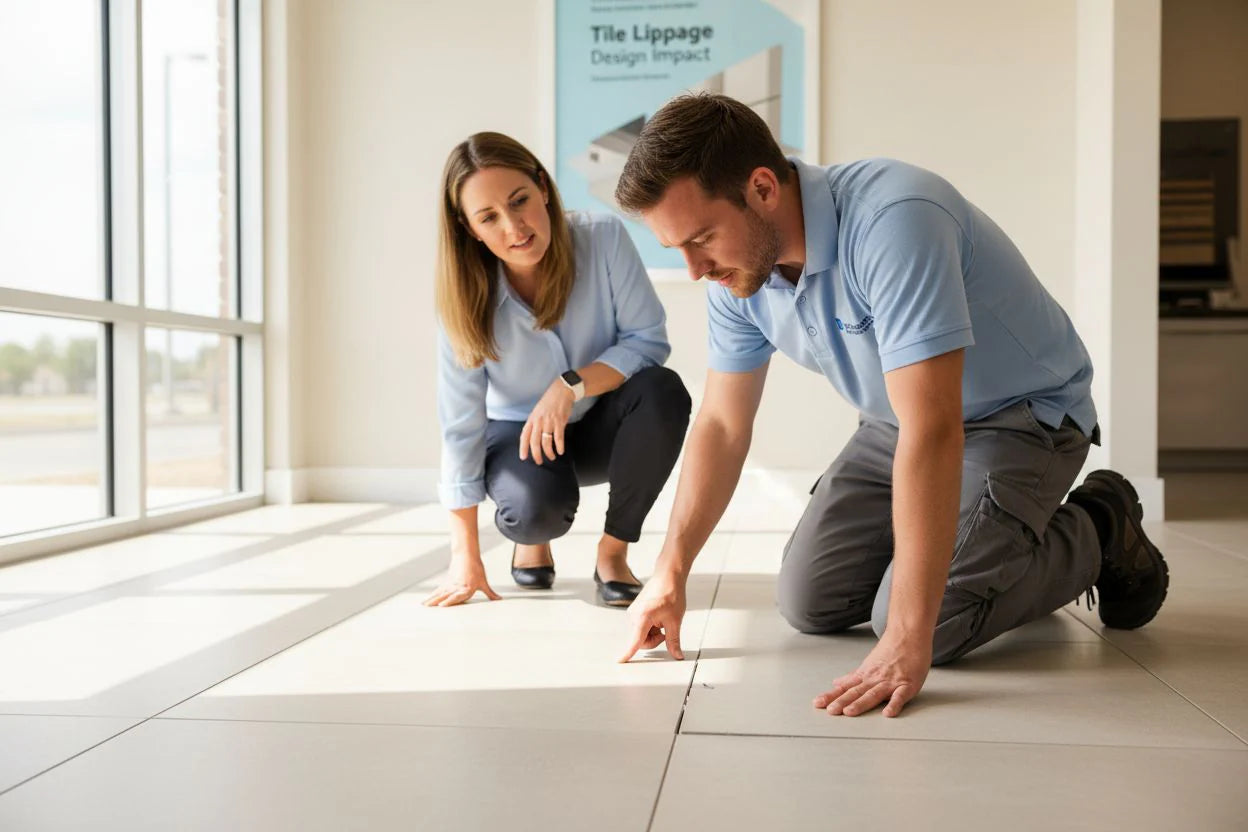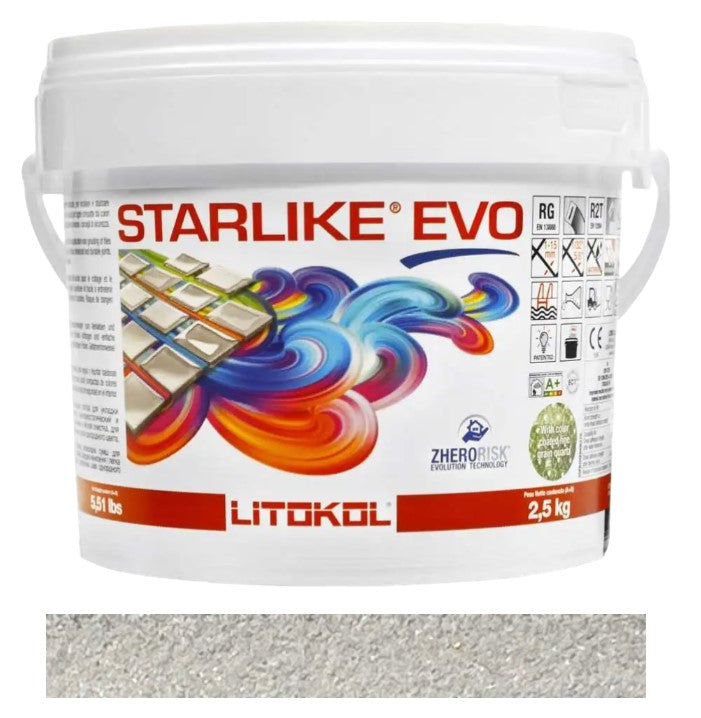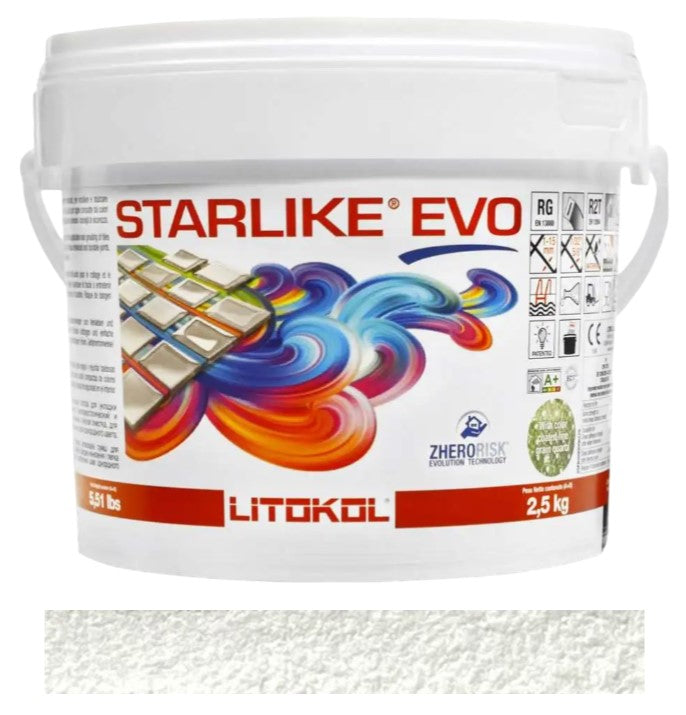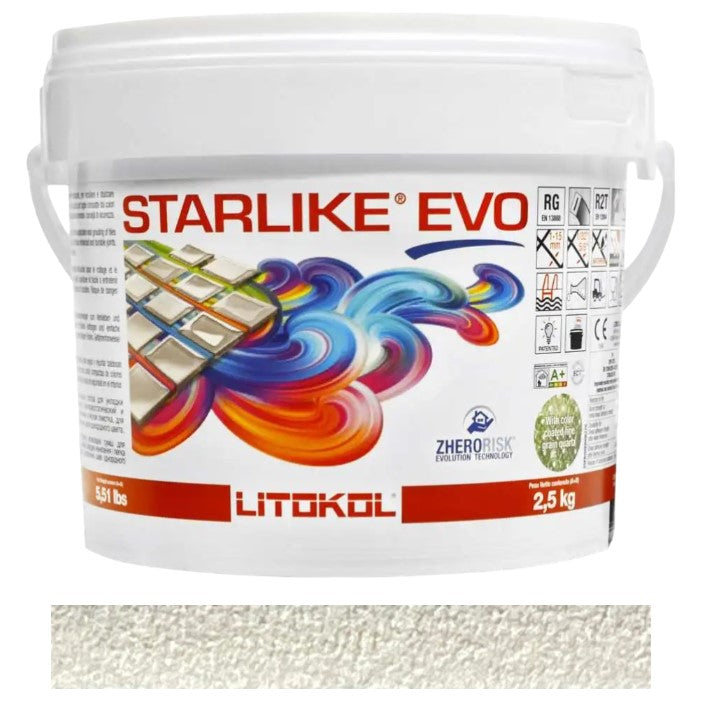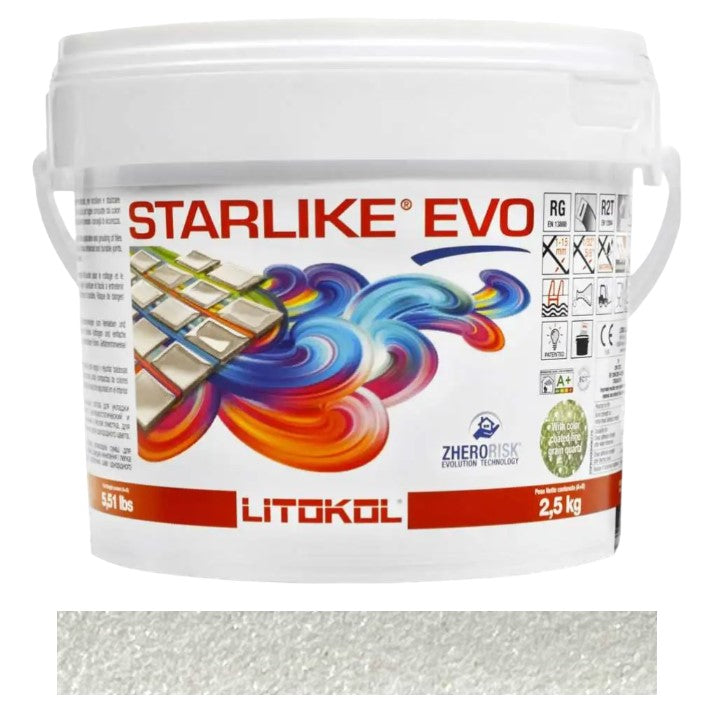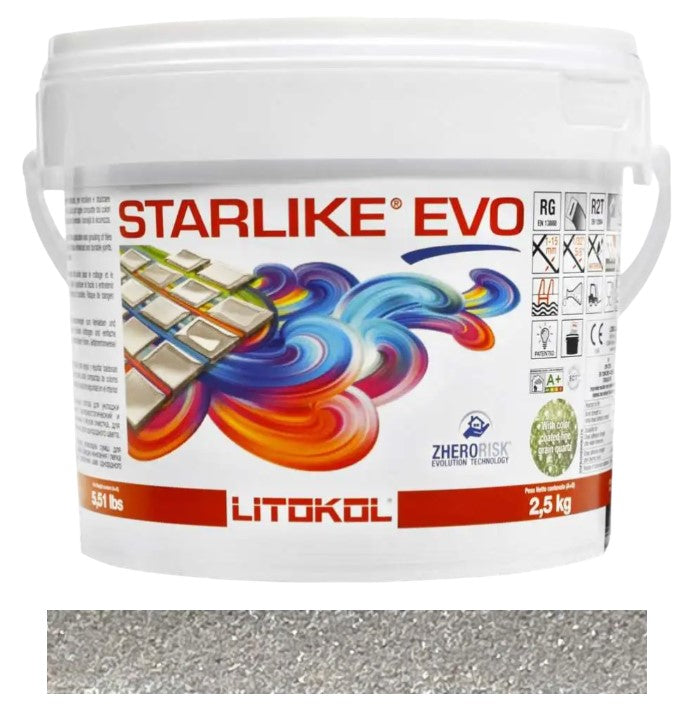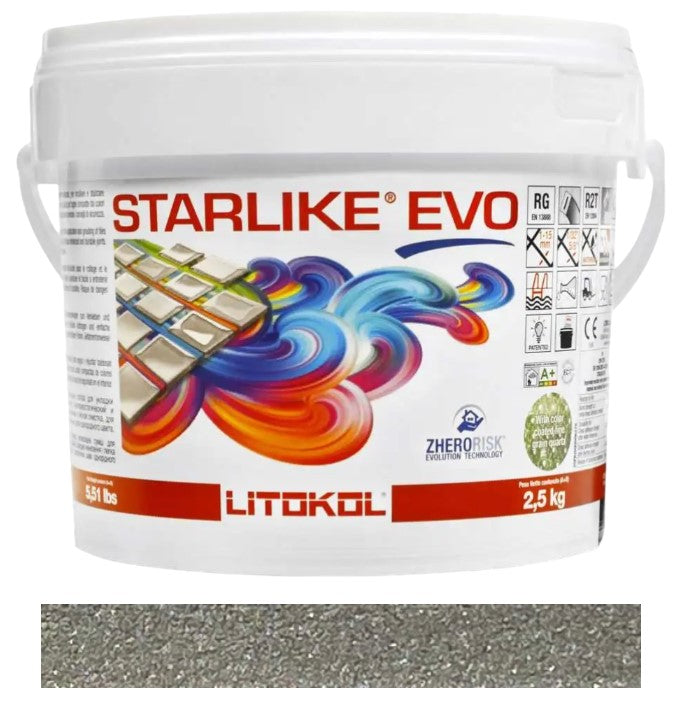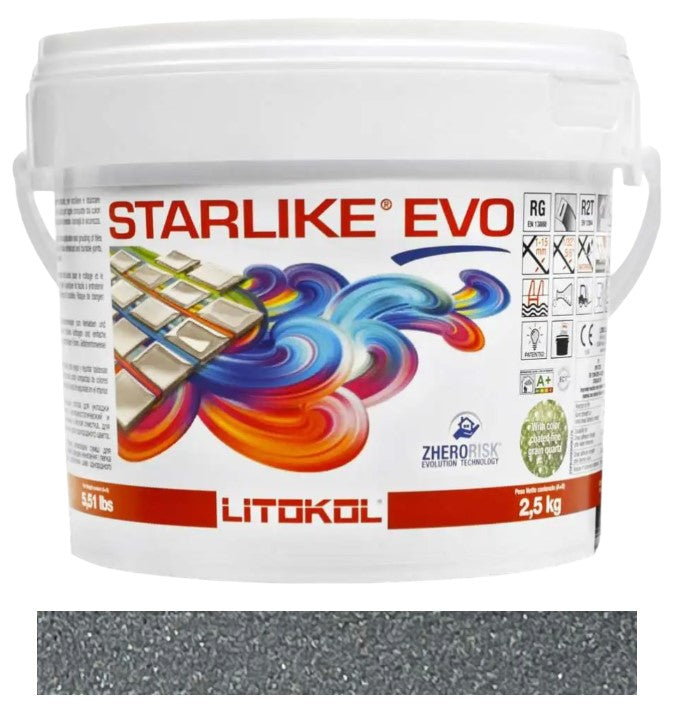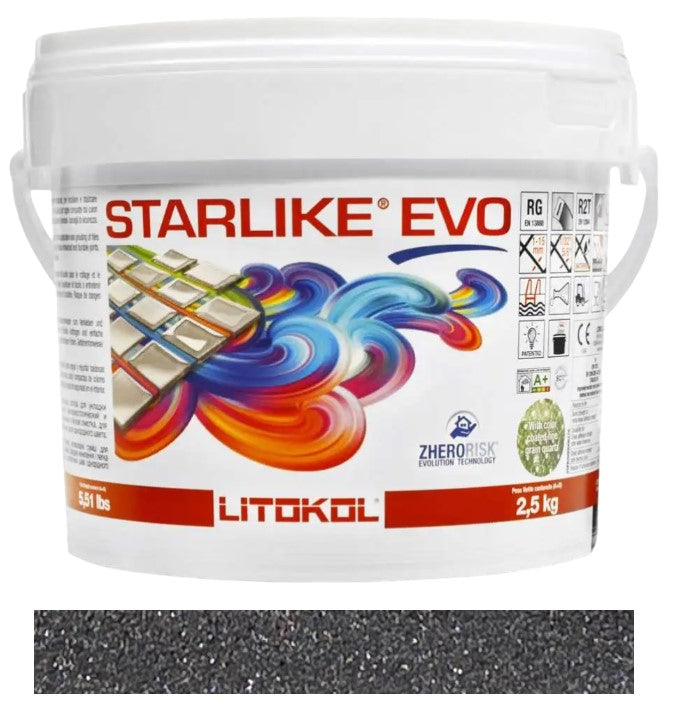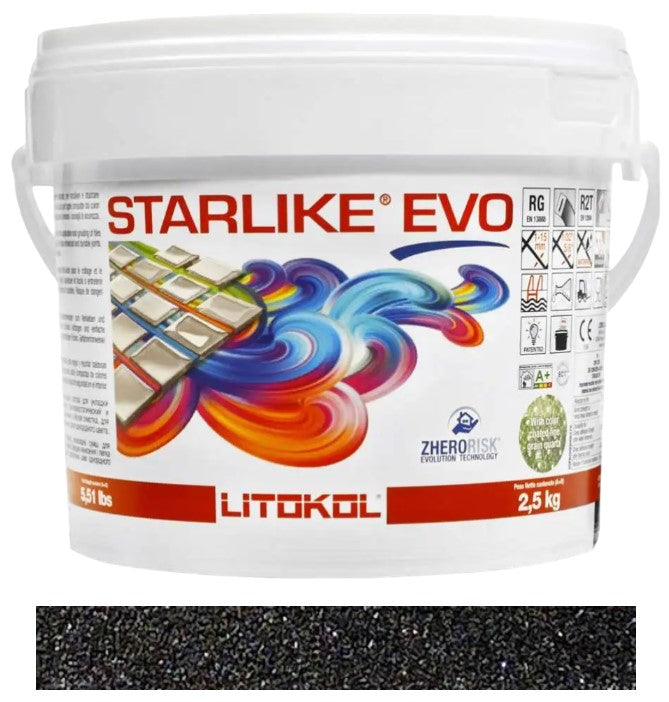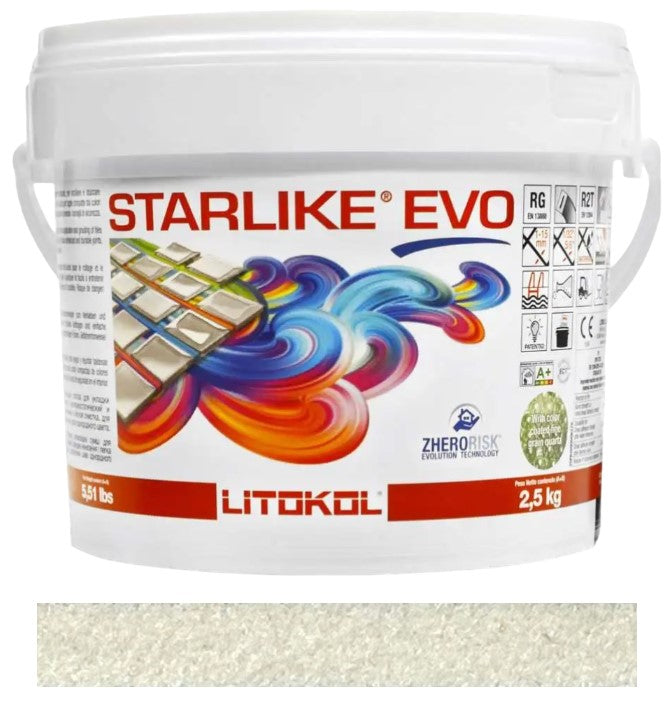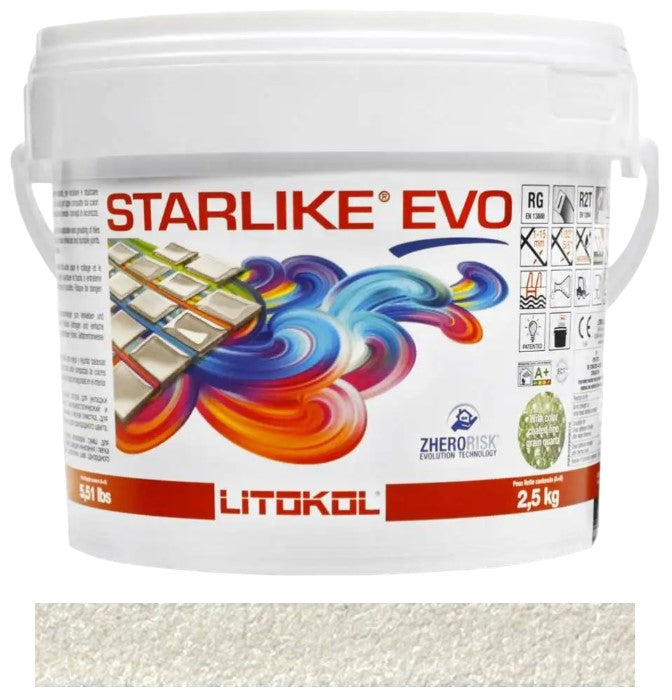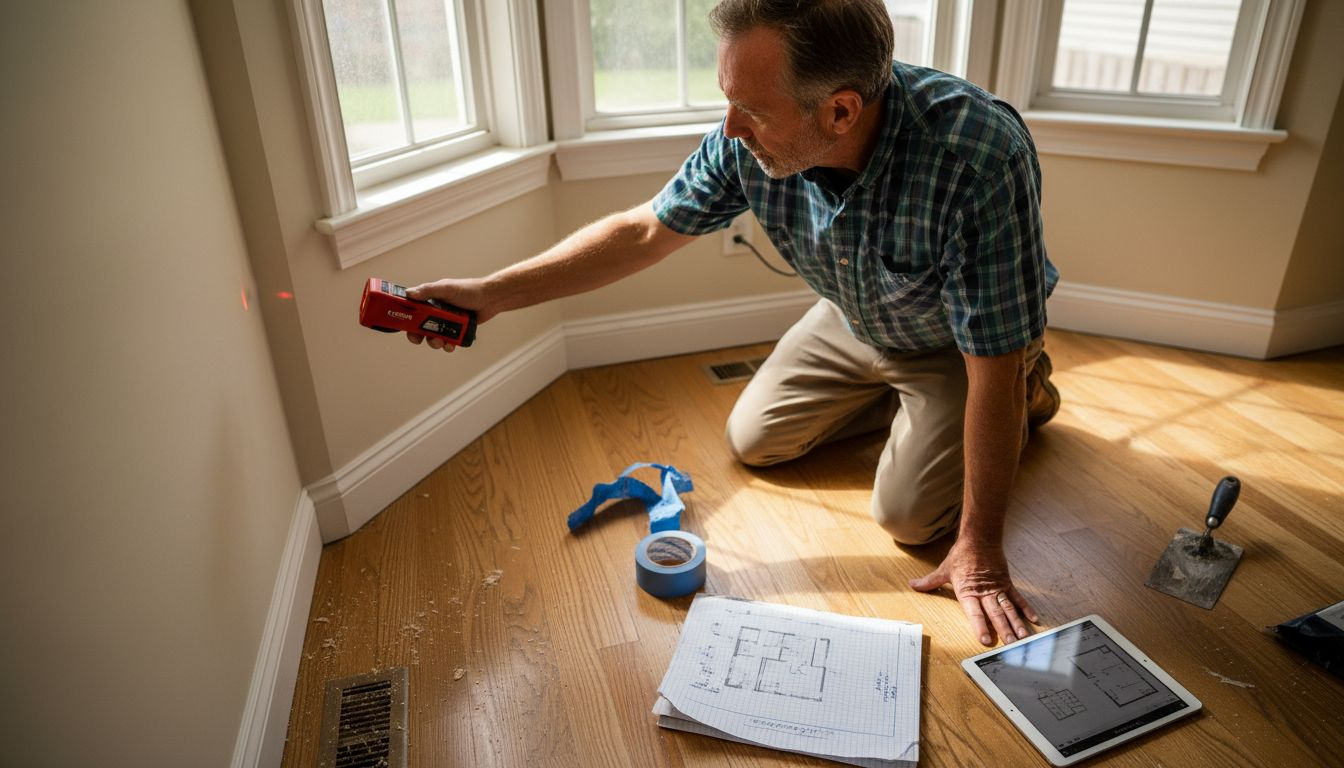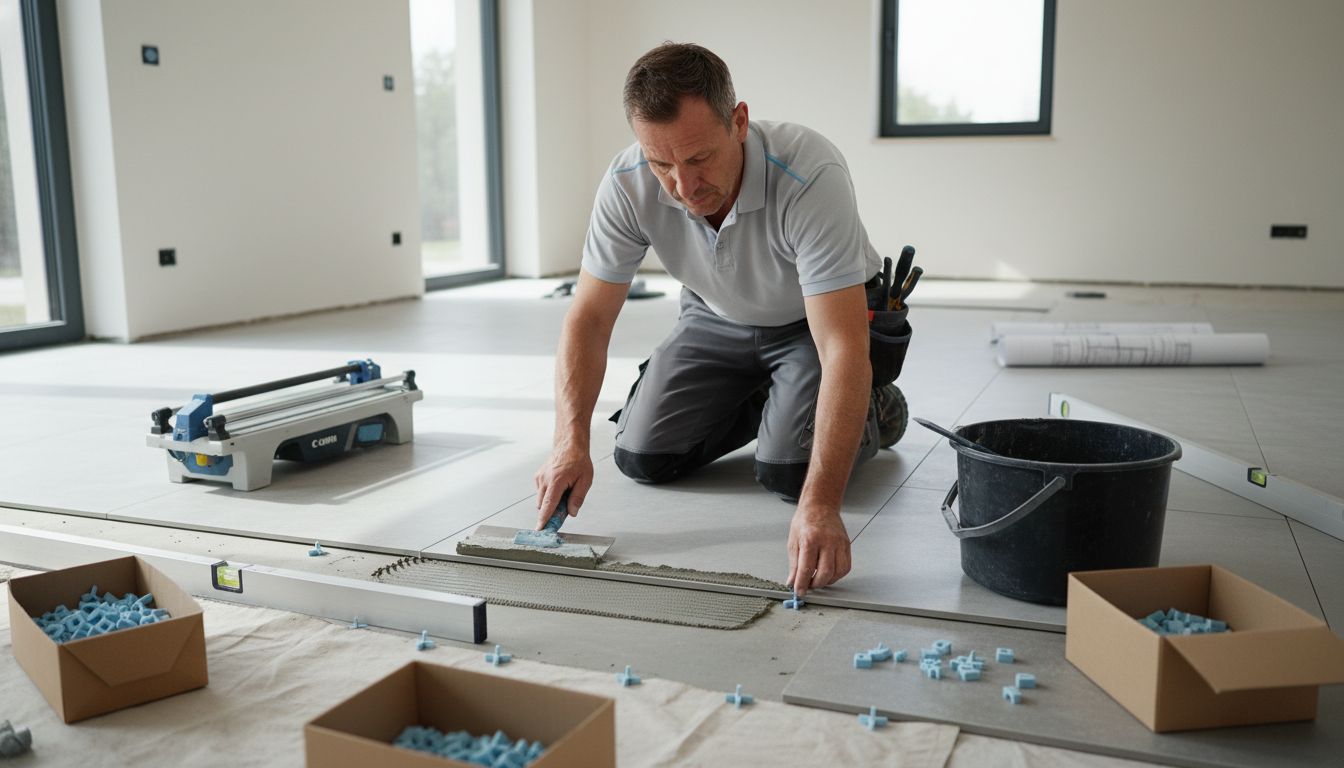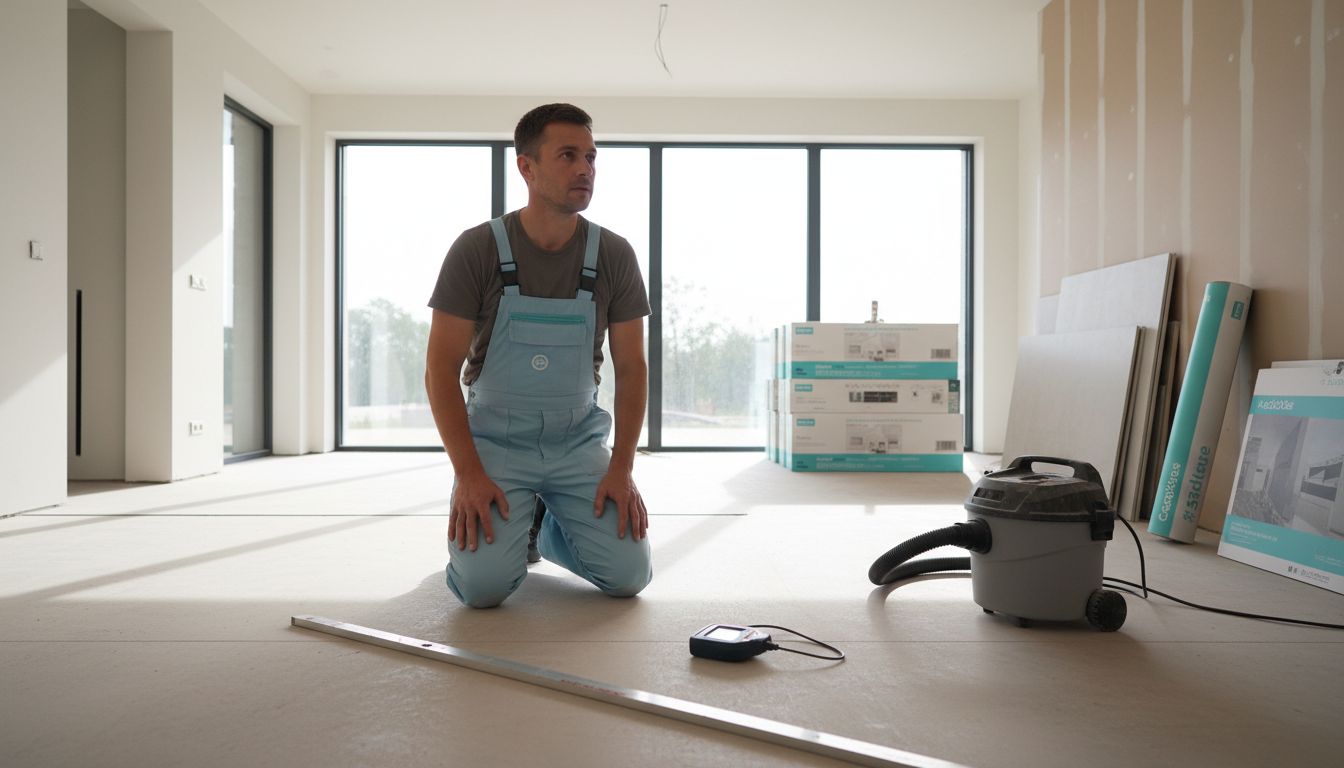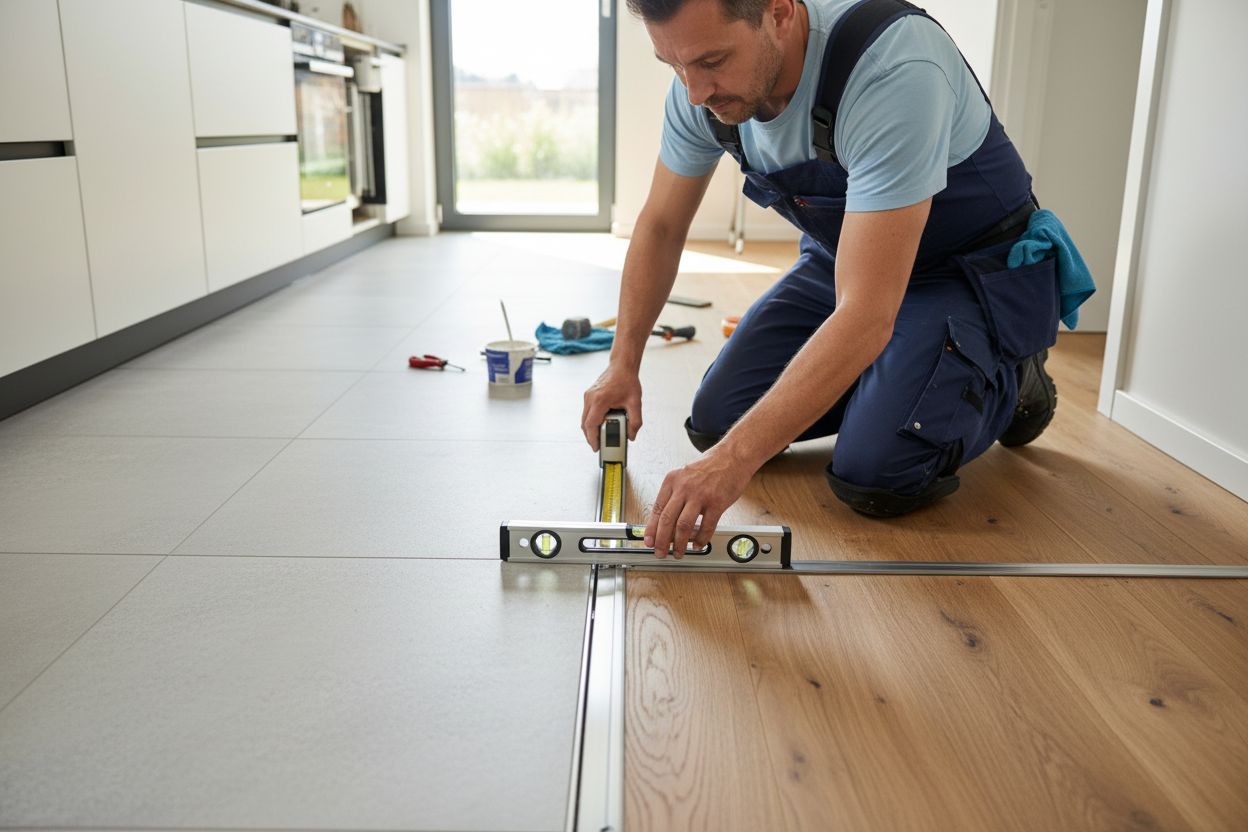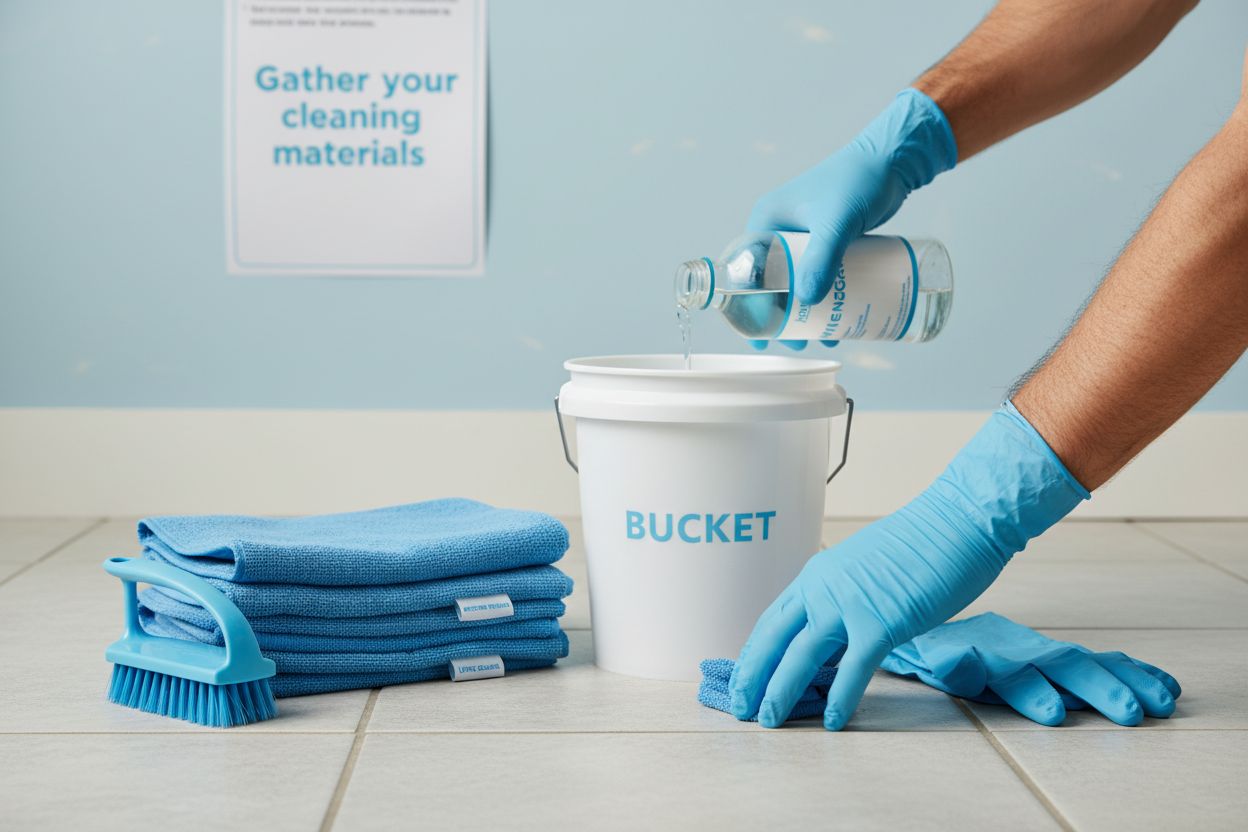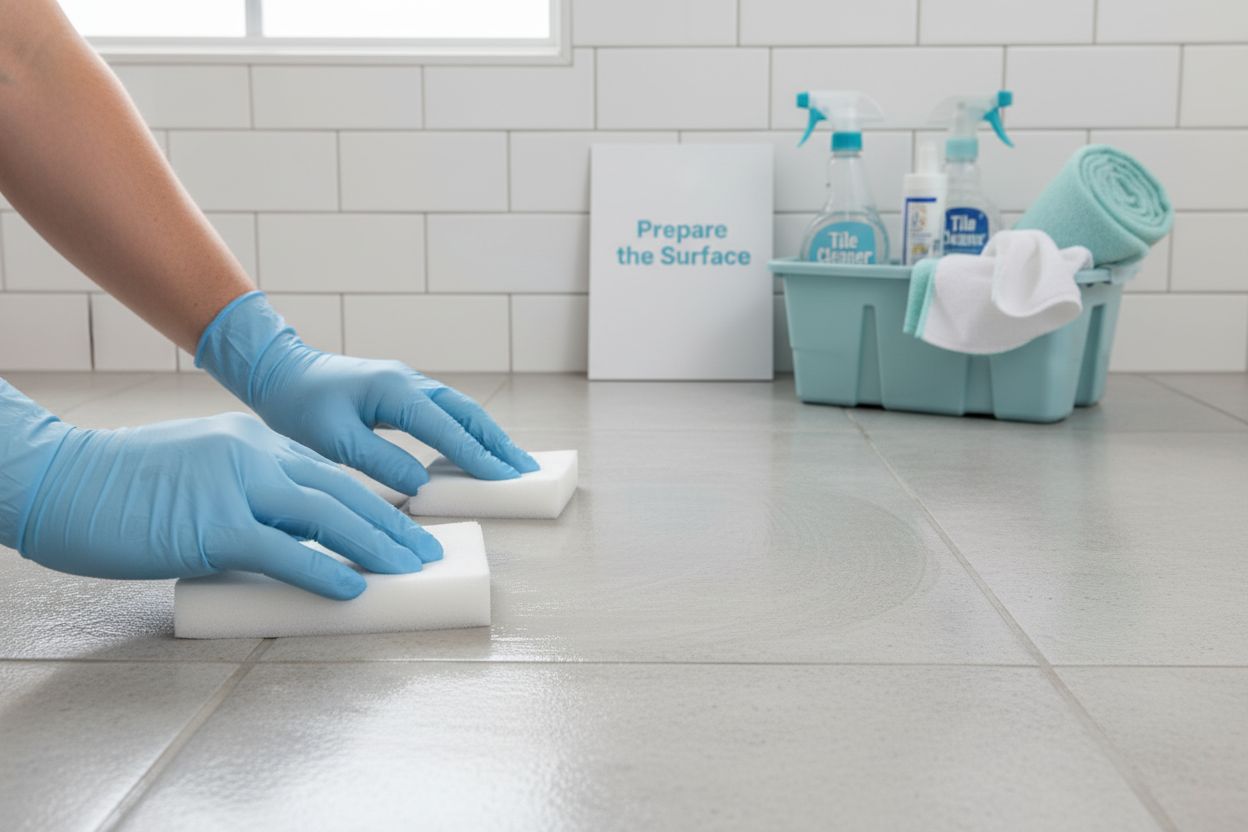Tile floors can look flawless at a glance, but hidden issues can ruin the entire room’s appearance. One problem stands out yet barely catches the eye at first—even a difference of just 1/32 of an inch between tiles is enough to cause lippage that can trip people and disrupt the look of an otherwise perfect floor. Most people worry about cracks or stains, but the real troublemaker is this subtle misalignment that most never think to check for.
Table of Contents
- Defining Tile Lippage: What It Is And Why It Matters
- The Causes Of Tile Lippage: Understanding The Factors
- The Effects Of Tile Lippage On Aesthetics And Functionality
- Identifying And Evaluating Tile Lippage In Your Space
Quick Summary
| Takeaway | Explanation |
|---|---|
| Tile lippage affects aesthetics and safety. | Height differences between tiles can result in tripping hazards and disrupt visual appeal, making installation quality crucial. |
| Proper substrate preparation reduces lippage risk. | Uneven or poorly prepared surfaces lead to alignment issues; ensure flatness before tile placement to minimize problems. |
| Manufacturing variations can cause lippage. | Differences in tile thickness or edge straightness impact installation; select tiles with consistent tolerances for better results. |
| Installation technique is key to minimize lippage. | Using proper methods like back buttering and leveling ensures a uniform surface, enhancing both appearance and functionality. |
| Visual inspection aids in lippage identification. | Conduct careful assessments under direct light to spot height discrepancies and ensure alignment before finalizing installation. |
Defining Tile Lippage: What It Is and Why It Matters
Tile lippage represents a critical technical consideration in tile installation that directly impacts the aesthetic quality and functional performance of tiled surfaces. At its core, tile lippage refers to the vertical displacement or height difference between adjacent tile edges when tiles are installed. This subtle yet significant variation can transform a seemingly perfect tile layout into an uneven, visually disruptive surface.
The Technical Anatomy of Tile Lippage
When tiles are installed, perfect alignment is the ideal scenario. However, tile lippage occurs when one tile edge sits higher or lower than its neighboring tile, creating an unintended step or bump. This misalignment can result from various factors such as:
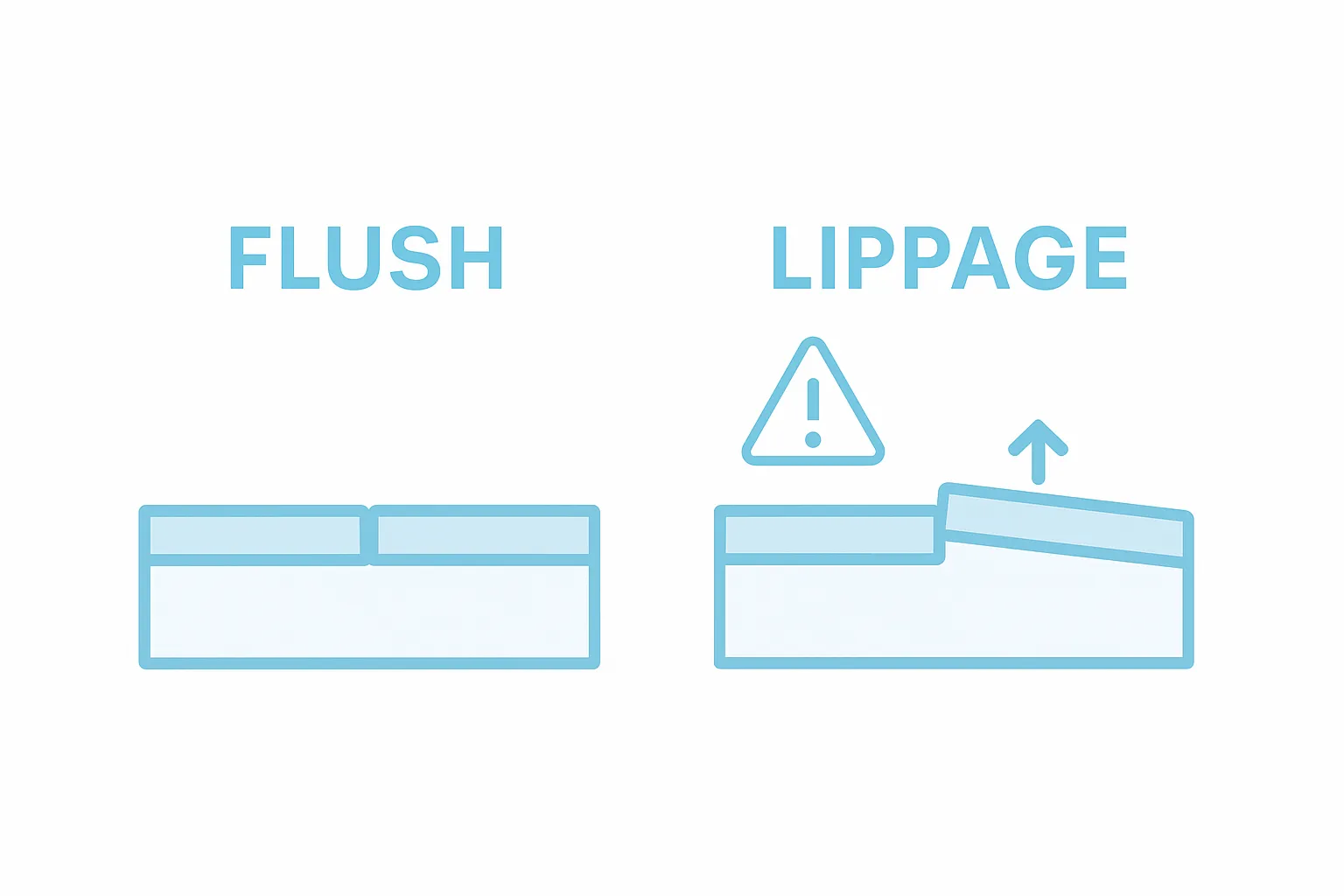
- Uneven substrate or underlayment surface
- Inconsistent tile manufacturing tolerances
- Improper installation techniques
- Variations in tile thickness or material composition
The measurement of lippage is typically precise, with professional standards establishing acceptable height differences based on tile size and installation location. Tile Industry Standards Research suggests that lippage tolerance varies depending on specific project requirements and tile dimensions.
Implications of Tile Lippage
Beyond aesthetic concerns, tile lippage carries significant practical implications. Excessive lippage can create tripping hazards, compromise surface smoothness, and potentially impact long term tile durability. For homeowners and design professionals, understanding lippage becomes crucial in selecting the right tile installation approach.
Professional installers typically aim to minimize lippage through meticulous preparation, precise leveling techniques, and selecting tiles with consistent manufacturing specifications. The goal is always a seamless, uniform surface that looks professionally crafted and maintains structural integrity over time.
The Causes of Tile Lippage: Understanding the Factors
Tile lippage emerges from a complex interplay of installation techniques, material characteristics, and substrate conditions. Understanding these underlying factors becomes crucial for professionals and homeowners seeking to create flawless tile surfaces.
Substrate and Surface Preparation Challenges
The foundation of tile installation significantly influences lippage potential. Uneven or improperly prepared substrates create inherent challenges that can lead to vertical misalignments. Research from Construction Materials Engineering indicates that substrate flatness plays a critical role in tile alignment.
Key substrate preparation challenges include:
- Uneven concrete or cement board surfaces
- Insufficient floor leveling before tile installation
- Variations in subfloor material compression
- Inadequate moisture barrier implementation
These preparatory issues can create microscopic height variations that compound during tile placement, resulting in noticeable lippage.
To help readers quickly identify the common sources of tile lippage, the following table summarizes each main cause described in the article and how it influences the installation outcome.
| Cause | Description | Impact on Tile Installation |
|---|---|---|
| Substrate Issues | Uneven or improperly prepared surfaces under the tiles | Leads to height differences between tiles |
| Manufacturing Variations | Differences in tile thickness, edge straightness, or quality | Makes consistent alignment more difficult |
| Installation Technique | Ineffective methods or lack of precision | Results in tiles being set at varying heights |
| Material Composition | Variations in the mix or density of tile materials | Can cause unpredictable tile behavior |
Manufacturing and Material Variations
Tile manufacturing processes introduce another significant lippage factor. Dimensional tolerances in tile production directly impact installation precision. Not all tiles are created equal, and variations in thickness, edge straightness, and manufacturing quality can contribute to lippage.
Professional installers must carefully evaluate tile specifications and select materials with consistent dimensions. Understanding different installation techniques becomes essential in mitigating these manufacturing-related challenges.
Installation Technique Complexities
Even with perfect substrate preparation and high quality materials, installation technique remains paramount. Improper tiling methods can introduce significant lippage. Factors such as trowel angle, adhesive application, and tile positioning dramatically influence the final surface alignment.
Expert installers utilize specialized techniques like back buttering large format tiles, using leveling systems, and maintaining precise grout joint width to minimize lippage. The goal is always a seamless, uniform surface that meets both aesthetic and functional requirements.
The Effects of Tile Lippage on Aesthetics and Functionality
Tile lippage extends far beyond a mere technical installation issue, profoundly impacting both the visual appeal and practical performance of tiled surfaces. Understanding these multifaceted consequences helps homeowners and design professionals make informed decisions during tile selection and installation.
Visual Disruption and Design Integrity
Lippage dramatically transforms the intended aesthetic of a tiled surface. Uneven tile edges create visual distraction, breaking the clean lines and smooth appearance that most design schemes aim to achieve. Preservation experts in architectural documentation emphasize that surface uniformity is crucial for maintaining design integrity.
Visual complications of tile lippage include:
- Breaking the perceived smoothness of floor or wall surfaces
- Creating unintended shadow lines between tile edges
- Disrupting geometric patterns and design symmetry
- Reducing the perceived quality of installation
Functional Performance Implications
Beyond aesthetic concerns, tile lippage presents significant functional challenges. The vertical misalignment between tiles can create practical problems that compromise the surface’s usability and longevity. Explore our guide on mixing tile patterns to understand how precise installation impacts overall design.
Potential functional issues include increased wear, potential tripping hazards, and compromised surface integrity. Pronounced lippage can trap dirt, make cleaning more difficult, and accelerate surface degradation.
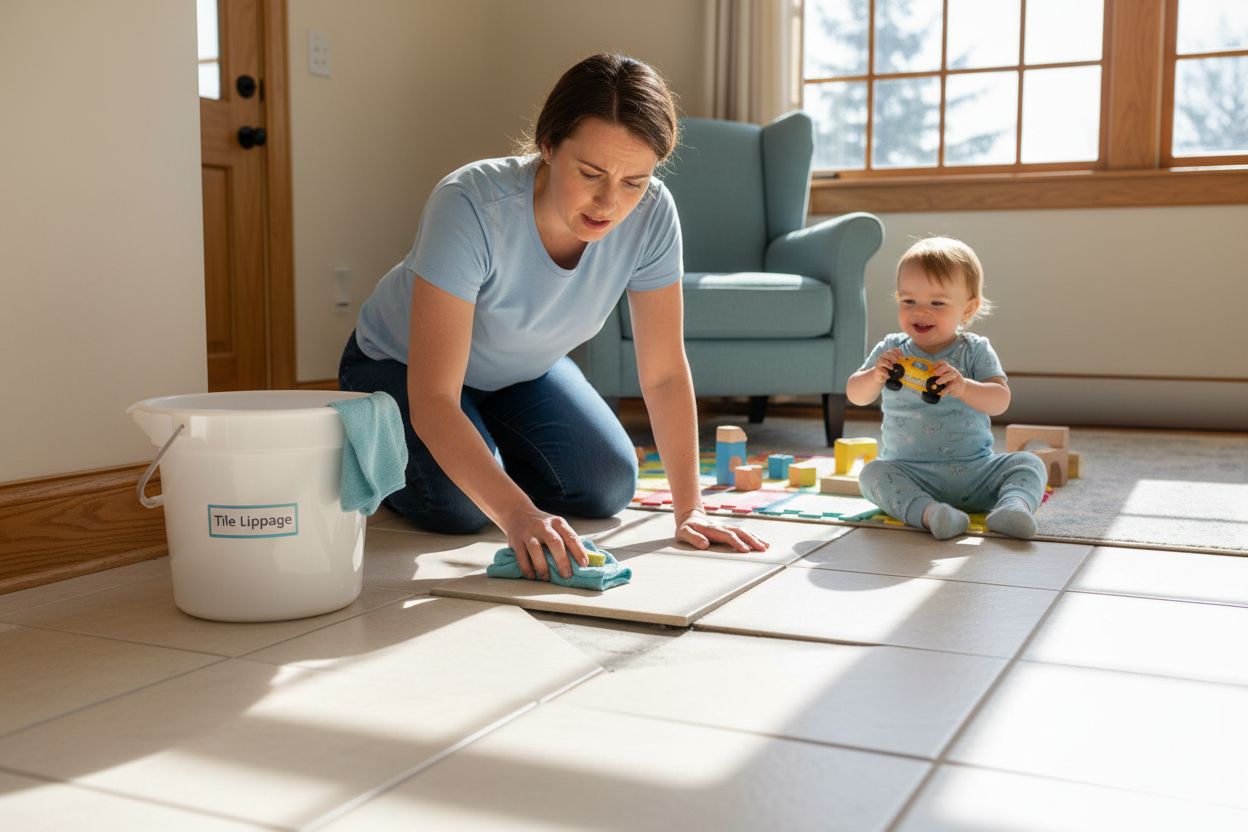 In high traffic areas or spaces requiring strict hygiene standards, these implications become particularly critical.
In high traffic areas or spaces requiring strict hygiene standards, these implications become particularly critical.
Long Term Structural Considerations
Professional installers recognize that tile lippage is not just a cosmetic issue but a potential indicator of broader installation problems. Excessive lippage might signal underlying substrate irregularities, inadequate preparation, or systemic installation challenges that could compromise the entire tiled surface’s long term performance.
The cumulative effect of lippage can lead to increased maintenance requirements, reduced surface durability, and potential safety risks.
This table highlights several practical effects of tile lippage on both the visual appearance and functional performance of tiled surfaces as outlined in the article.
| Effect Type | Specific Impact | Why It Matters |
|---|---|---|
| Visual | Breaks surface smoothness and design symmetry | Reduces perceived installation quality |
| Visual | Creates shadow lines between adjacent tiles | Makes misalignments more visually obvious |
| Functional | Increases risk of tripping or stumbling | Compromises user safety, especially in homes |
| Functional | Traps dirt and hinders cleaning | Diminishes hygiene and surface longevity |
| Structural | Signals possible underlying substrate or install flaws | May require maintenance or early replacement |
| Addressing lippage during the initial installation remains far more cost effective than managing subsequent repair or replacement needs. |
Identifying and Evaluating Tile Lippage in Your Space
Identifying tile lippage requires a systematic approach that combines visual assessment, precise measurements, and understanding of industry standards. Homeowners and professionals alike can learn to recognize and evaluate lippage effectively, preventing potential design and functional challenges.
Visual Assessment Techniques
Initial lippage detection begins with careful visual inspection. Keen observation reveals subtle height variations between tile edges that might otherwise go unnoticed. Tile installation standards provide guidelines for acceptable lippage measurements based on tile size and installation context.
Key visual assessment strategies include:
- Examining tiles under direct, raking light to highlight surface irregularities
- Checking tile edges from multiple viewing angles
- Looking for unintended shadow lines between tiles
- Assessing overall surface smoothness and alignment
Measurement and Verification Methods
Beyond visual inspection, precise measurement techniques help quantify lippage accurately. Professionals utilize specialized tools and methods to evaluate tile alignment with scientific precision. Explore our guide on vintage tile patterns to understand how design considerations impact installation quality.
Reliable measurement techniques involve:
- Using a straightedge or metal ruler to check tile alignment
- Employing digital measurement tools for exact height differences
- Comparing tile edges against industry standard tolerances
- Documenting lippage variations for potential remediation
Professional Evaluation Considerations
While homeowners can conduct initial assessments, professional evaluation provides comprehensive insights. Tile installation experts consider multiple factors beyond simple height differences, including substrate conditions, tile material characteristics, and long term performance implications.
Professional evaluators examine lippage through a holistic lens, considering aesthetic integrity, potential safety risks, and the overall quality of the installation. Their expertise helps distinguish between acceptable minor variations and significant installation issues that require corrective action.
Struggling With Tile Lippage? Create Flawless Spaces With TileChoices.com
If tile lippage has left your floors uneven or your walls visually disrupted, you are not alone. Many homeowners and professionals worry about the aesthetic and safety risks caused by mismatched tile edges. The pain of seeing your design vision compromised by poor tile alignment is real and can be frustrating during home improvement projects. Fortunately, you do not have to settle for surfaces that fail to impress.
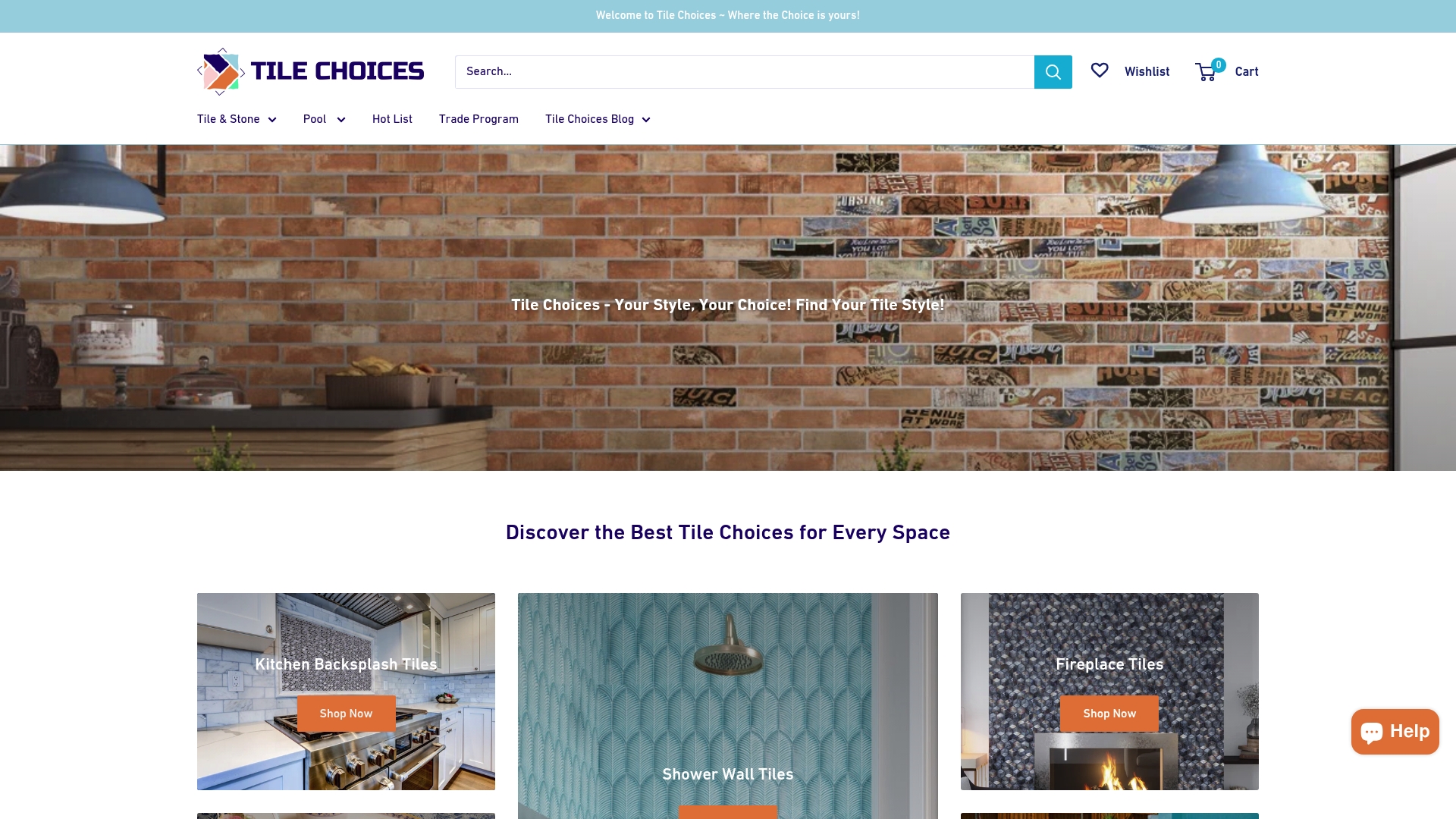
Discover a wide range of expertly crafted tiles at TileChoices.com that minimize installation issues and support beautiful, smooth results. Browse through beautifully detailed collections and consult our installation and design resources to make informed tile selections right from the start. Do not let lippage undermine your next renovation. Visit TileChoices.com now to explore quality materials, get practical tips, and order samples that help you achieve a flawless look. Your dream space deserves it.
Frequently Asked Questions
What is tile lippage?
Tile lippage refers to the vertical displacement or height difference between adjacent tile edges in a tiled surface, which can compromise both aesthetics and functionality.
What causes tile lippage?
Tile lippage can be caused by uneven substrate preparation, variations in manufacturing tolerances, improper installation techniques, and differences in tile thickness or material composition.
How does tile lippage affect design?
Lippage can disrupt the visual appeal of a tiled surface by creating uneven edges, shadow lines, and breaking geometric patterns, which can diminish the perceived quality of the installation.
How can I minimize tile lippage during installation?
To minimize tile lippage, ensure proper substrate preparation, choose tiles with consistent dimensions, use precise installation techniques, and consider using leveling systems during the tiling process.

